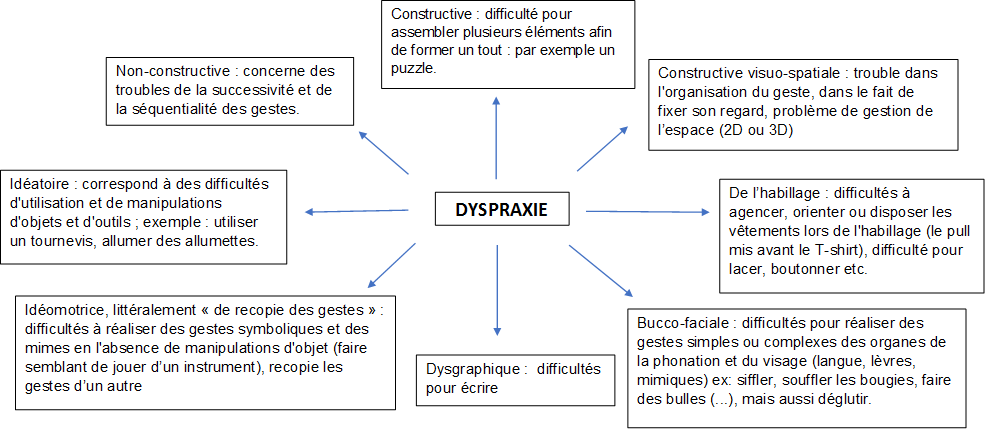Onhandiscute is the part of @talentEgal where every month we take a look at a different disability or illness. As part of our plan to raise awareness, in these articles, we’re giving you some background information on each of them.
……………………………………………………………………….
Having explored three of the main dys disorders, Onhandiscute now takes a look at the fourth of this type: dyspraxia. Every dys disorder affects a particular part of learning, dyslexia affects written language, dyscalculia affects numbers, and dysphasia is about spoken language – so what about dyspraxia? Dyspraxia affects our coordination of movements, hence ‘praxia’, which is about voluntary and learned movements.
Several different types exist:

the various forms of dyspraxia :
In general terms, for all the movements and gestures that we learn, our brain creates an ‘imprint’ that it can refer back to when we want to make that same gesture again. After a while, you don’t have to think about the movements you need to make when bringing your fork to your mouth, it’s as if your body just knows how to do it on its own. But when you have dyspraxia, you don’t enjoy those same programmed or automatic movements in the same way. The muscles responsible for movement function normally, but it’s reproducing these gestures that requires considerable effort and can result in something seemingly very clumsy. When we take a glass of water, for example, we pick it up in a very automatic way and adjust our movements to the weight, and before pouring the water into our mouth, we consider the height of the glass and its position in space (is it sitting on the table or is someone handing it to you?). But you didn’t consciously go through that long thought process before taking a drink, did you? For people with dyspraxia, it’s these automatic actions that cause problems – they need to think about every detail, so things might take a little longer, to notice and process information picked up by their senses, then organizing and planning their movements.
Dyspraxia requires a specific kind of treatment and, depending on the type of dyspraxia, lots of different retraining can be helpful:
– speech therapy, to work on reading, articulating and swallowing, in cases of orofacial dyspraxia;
– psychomotor and physical therapy to work on specific and more general motor skills, balance and coordination of movements;
– occupational therapy to work on movements in everyday life, movement strategies for getting dressed, typing at a keyboard, double spacing, and so on;
– orthoptics to correct the way we see things, having an overall oversight, ocular mobility, understanding the space around us by looking at it closely, and so on.
For an animated overview of this dys disorder, take a look at Gaël’s story:

